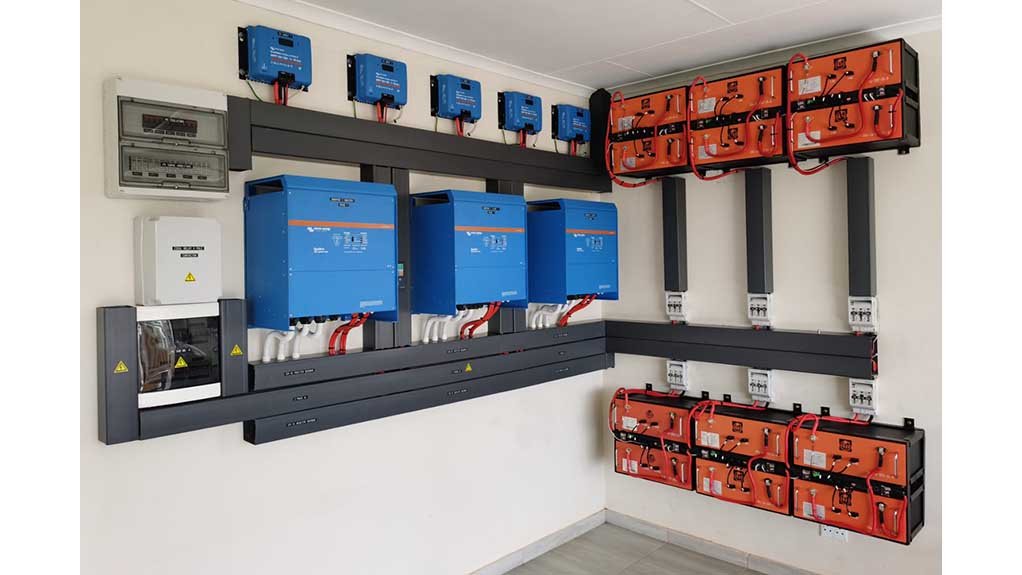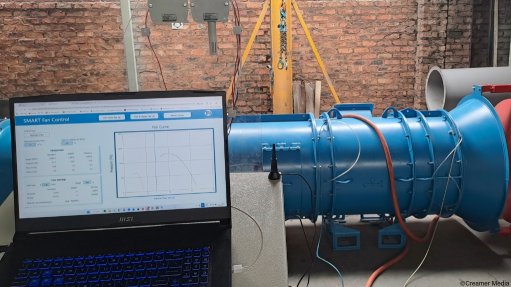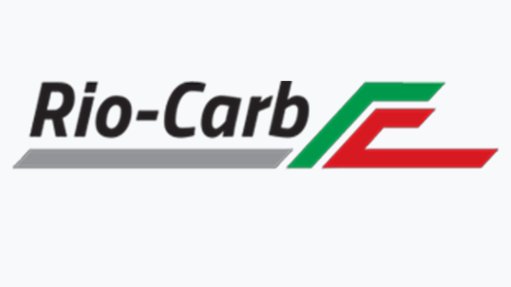Energy storage key to embedded electricity solutions


POWERED UP REVOV states that it is important to include energy storage and its solutions in embedded electricity solution discussions
Amid discussions around embedded electricity solutions, battery equipment supplier REVOV states that it is important to include energy storage and its solutions in these discussions.
Energy storage in renewable-energy and embedded-electricity solutions addresses the time domain – electricity generated during the day can be used at night and the irregularity of traditional renewable system generation can be managed, allowing for power security during grid outages.
“In traditional systems, the time of power production needs to match the time of use, otherwise this can lead to either a waste of energy or a power shortage. With energy storage, that is no longer a problem because the time of the production is irrelevant to the time of use,” explains REVOV MD Lance Dickerson.
Additionally, energy storage addresses the cost domain and the location domain, as it reduces the cost of electricity in areas where time-of-use tariffs are implemented. The location of production also allows for the dynamic allocation of capacity based on movement, consequently allowing for energy to be moved around in a renewable-energy microgrid.
Dickerson states that the best technology for storing the power that is generated in the embedded systems would be long-life technology that is lightweight, quickly chargeable and modular, in addition to being safe, energy dense and chemically inert, with a slow degradation over time.
“This perfectly describes lithium iron phosphate (LiFePO4) batteries which are automotive and military grade, and meet all of the abovementioned criteria,” he says.
Moreover, South Africa is well equipped to house these energy storage units, or LiFePO4 batteries, owing to most houses facing north. Consequently, there are large amounts of renewable energy, such as sunlight, in population-dense areas and most houses have a centralised point to connect to the grid.
Additionally, local homes have strong networks to substations, and most of them have outbuildings that allow for the housing of storage and have brick walls, allowing for batteries to be mounted against the walls.
Houses are also well spaced apart which allows for the roof area of a single storey house to equal its floor area, allowing for a high density of solar panels.
There are challenges in areas where construction guidelines and electrical guidelines are not followed, resulting in unsound structures and roofs not being suited to house the equipment, says Dickerson.
However, microgrid solutions could be implemented in these areas, as the solutions use the same technology in centralised storage solutions, such as the REVOV Optimus, he adds.
Large installations or installations to scale are feasible because they raise the energy density by putting a large number of batteries into a small area. This therefore reduces maintenance and installation efforts, the cost of every kW/h and allows for remote maintenance and sharing a common resource, Dickerson explains.
In the private sector, these large or scale installations would be funded through private funding or banks.
Dickerson says, with the cost of renewable energy solutions or embedded electricity solutions with storage being lower than the current power supply, it is possible to fund installations using excess funds in bonds or by relatively small bond extensions.
“For an extension of the average bond by 10% to 15%, an average house can be taken off the grid. The payback period of that bond extension is now less than five years, so the risk of equipment failure and redundancy is mitigated,” he concludes.
Article Enquiry
Email Article
Save Article
Feedback
To advertise email advertising@creamermedia.co.za or click here
Press Office
Announcements
What's On
Subscribe to improve your user experience...
Option 1 (equivalent of R125 a month):
Receive a weekly copy of Creamer Media's Engineering News & Mining Weekly magazine
(print copy for those in South Africa and e-magazine for those outside of South Africa)
Receive daily email newsletters
Access to full search results
Access archive of magazine back copies
Access to Projects in Progress
Access to ONE Research Report of your choice in PDF format
Option 2 (equivalent of R375 a month):
All benefits from Option 1
PLUS
Access to Creamer Media's Research Channel Africa for ALL Research Reports, in PDF format, on various industrial and mining sectors
including Electricity; Water; Energy Transition; Hydrogen; Roads, Rail and Ports; Coal; Gold; Platinum; Battery Metals; etc.
Already a subscriber?
Forgotten your password?
Receive weekly copy of Creamer Media's Engineering News & Mining Weekly magazine (print copy for those in South Africa and e-magazine for those outside of South Africa)
➕
Recieve daily email newsletters
➕
Access to full search results
➕
Access archive of magazine back copies
➕
Access to Projects in Progress
➕
Access to ONE Research Report of your choice in PDF format
RESEARCH CHANNEL AFRICA
R4500 (equivalent of R375 a month)
SUBSCRIBEAll benefits from Option 1
➕
Access to Creamer Media's Research Channel Africa for ALL Research Reports on various industrial and mining sectors, in PDF format, including on:
Electricity
➕
Water
➕
Energy Transition
➕
Hydrogen
➕
Roads, Rail and Ports
➕
Coal
➕
Gold
➕
Platinum
➕
Battery Metals
➕
etc.
Receive all benefits from Option 1 or Option 2 delivered to numerous people at your company
➕
Multiple User names and Passwords for simultaneous log-ins
➕
Intranet integration access to all in your organisation



















